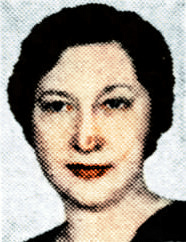Historic Battle of Midway first of its kind in history
Japan’s losses astounding in view of fact that Yamamoto sent tremendous array of ships into fight, Casey writes
By Robert J. Casey
With the Pacific Fleet, off Midway, June 8 –
When we get over our justifiable condition of amazement and shock, we may be able to tell something about the fantastic battle for Midway Island – its derivations, its technique and possible effects, not only on this war, but on naval warfare.
At the moment, in considerable awe, we look out upon the few tangible evidences of it and listen to reports of Japanese losses. And we feel as the old frigate captain must have felt, when asked to make a report on the Monitor and the Merrimack, or as a Maori warrior might feel trying to catch the significance of a tank attack.
One is without standards of discussion for such a melee as this. For despite the operations here and there that foreshadowed it – some of them conducted by the Japanese themselves – this ranks as the first all-out naval-air battle in the history of the world.
We who saw it have only an indefinite idea of what was done or how – and not many of the contestant Japs are alive to tell. Our force quit working only when enemy objectives no longer remained in the area.
And when we moved off, it looked as if Japan was sitting back where she had always set as a third-rate naval power: her offensive reserve dissipated, anywhere from five to nine of her ships on the bottom, about 10,000 of her finest naval and marine personnel drowned, and 200 of her planes destroyed.
From Dec. 7 until June 4, Japan, after long preparation for war, was a definite menace to the United States. On June 3, with the better part of a first-class fleet, adequate air support and transport and supply ships, Japan came across the horizon, cockily convinced that nothing stood between her and Midway Island, and little between her and the U.S. mainland.
Outsmarted by U.S.
Admiral Yamamoto, despite his recent unfortunate experience in the Coral Sea, had thought this expedition too simple to merit his personal attention. He knew, as did everybody else, that never in history had such a force as this been launched against the United States. He knew that in the nature of things, with a two-ocean war in progress and long communication lines requiring protection from Dutch Harbor to Sydney, the defenders would probably be able to muster only a very inferior defense force.
And save for a bit of quicker thinking on the part of the United States High Command, everything might have come off as Yamamoto had foreseen. That is why it will continue to be so unbelievable that within two hours after battle was joined, the Japs were on their way back to Tokyo, their fleet terribly smashed.
Never until now have the theorists been willing to concede that wiser thought and defter operation might be a factor in naval warfare. Success on the sea has always been earmarked for the side with a preponderance of battleships.
Taranto, Singapore cited
Bombing of ships by airplanes, of course, is nothing particularly new. It was being tried before the end of the last war and sundry prophets were being court-martialed for suggesting that the technique could be perfected. The British operation at Taranto in 1940 was definite indication of what planes could accomplish against ships. And having demonstrated the technique, the British themselves suffered at Crete and near Singapore.
But it was not until June 4 that anybody got around to making a large-scale test of the idea.
It was the first time a couple of fleets got together with all the old panoply of naval war and then subordinate everything else to air operation and – well, you know what happened.
The Coral Sea engagement was something of the same sort as this, but smaller and incomplete.
The array of ships in the deadly tangle here, however, was the biggest ever seen on any ocean in any war.
Japanese strength
Yamamoto’s men had brought to this strange rendezvous two to four battleships, four carriers (and possibly five) and about a dozen cruisers, a quantity of destroyers estimated anywhere from 15 to 30; 20 auxiliaries, including four large transports, seaplane tenders, etc., in a landing convoy.
Without repeating the reasons for uncertainty in the count, we may point out that the losses were anywhere from five to eight ships. What we contributed to the fight is naturally a military secret, but our own losses were entirely disproportionate.
You get some of the significance of these figures when you consider other battles that have made history. Jutland, for instance, resulted in the bottling up of the Imperial German Navy for the duration of World War I and, when fought, was considered the most desperate sea fight since the invention of gunpowder, but in that engagement, the British lost three capital ships and the Germans two – between them just equaling the low estimate of Japan’s loss at Midway. Britain lost 3,500 men. Germany 3,000 at Jutland. Japan at Midway lost more than 10,000.
In the Battle of Tsushima Strait, where Admiral Tōgō defeated Rozhestvensky in 1905 and Japan began to get delusions of grandeur, the fight was broken off only when most of the Russian fleet was underwater. But the Russians brought to it only five ships that could actually be classed as ships. Five or six others were ancient recommissioned hulks, and contributed nothing at all to the score. These matters, of course, are history and apparently have nothing to do with the Battle of Midway. But one cannot help but think of them when one notices the casualness with which our recent performance was treated by those most concerned.
Value of carriers
You get to wondering if this type of warfare may not make the old standards of battleship losses obsolete. Well, maybe they do, but it seems that aircraft carriers – the new capital ships – are definitely part of this new warfare. You cannot carry on any seagoing air blitzes without them, and they are just as hard to produce as battleships – and harder to man.
Let us consider where, as a result of the Battle of Midway. Japan stands in respect to carriers. At the beginning of the war, Yamamoto had admitted, nine carriers. Of these, the Kaga and Akagi, converted battleships, were the largest. They were similar to our Saratoga and Lexington in most respects and carried from 50 to 60 planes apiece. Two new carriers were ready to be commissioned at the time of Pearl Harbor and it is generally believed that they were made to carry 60 planes apiece.
Of the remaining seven, one, the Hōshō, was slow, and carried only 26. Three, the Sōryū, Hiryū and Zuihō, carried from 30 to 40 apiece. The Shōkaku and Zuikaku carried from 45 to 50, and the Ryūjō, 24 to 30.
Putting it all together, the Japs had 11 carriers capable of handling 520 planes at a maximum.
As against that, we had newer carriers capable of handling 580 planes and our average speed and average carrier size were considerably larger. Had we been less generally spread out between two oceans and the two poles, we would have been able to meet the enemy on an even footing the day after Pearl Harbor without waiting for ships now coming off the ways – without waiting for the Battle of Midway.
Three-to-one ratio
Under the circumstances, Japan was able to bring to most of the battles in the Pacific three carriers to our one. Japan was in a position to send six carriers against a dot on the map like Midway; we could not have mustered six against Tokyo.
Japan has been singularly lucky with her carriers. A couple were banged up in the fight for the Philippines, but they got back home for repairs and were at sea again in a couple of months. In the Coral Sea, however, the breaks began to go the other way. Our planes sank one there and sent a second home disabled.
Well, it doesn’t take a slide rule to figure that if Japan lost four carriers at Midway and one in the Coral Sea and is nursing another in drydock, then she has only four or five at the outside, available for work now. She may have an undetermined number of small carriers, converted merchantmen and the like, capable of handling 15 planes apiece, but they are too slow to permit their inclusion in any fleet action.
It is significant that the United States force that went out to meet the approaching Japanese at Midway was the largest force the United States ever sent anywhere against anybody in an act of war. As fleets go, it was a good one – in equipment as well as in brains – one of the most expensive collections ever seen anywhere. But this priceless array won the battle with a couple hundred boys in airplanes whose total equipment cost probably as much as a couple of destroyers.



